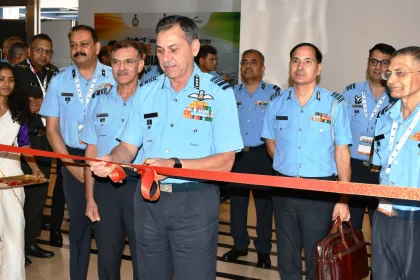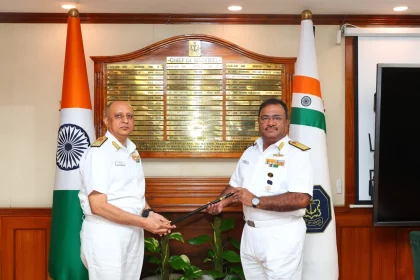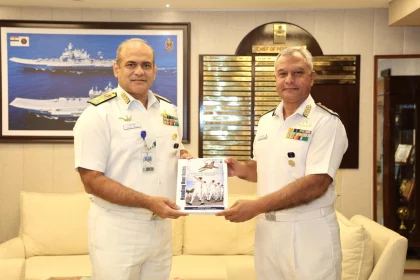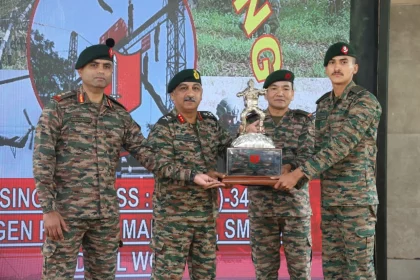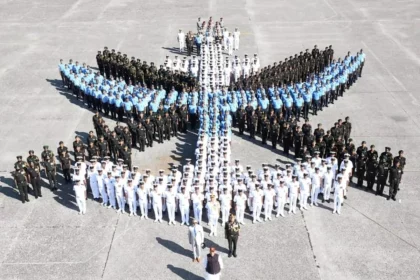Raj Kumar Arora Assumes Charge as Financial Advisor (Defence Services)
Senior IDAS officer Raj Kumar Arora takes over as Financial Advisor (Defence Services), bringing decades of expertise in defence finance…
Southern Air Command Hosts Industry Outreach on Cargo Drones for Island Logistics
Southern Air Command explores drone-based logistics solutions for Lakshadweep and Minicoy in collaboration with FICCI.
Vice Admiral B. Sivakumar Assumes Charge as 40th Chief of Materiel, Indian Navy
Vice Admiral B. Sivakumar, a decorated electrical and technical specialist, takes over as the 40th Chief of Materiel from Vice…
Vice Admiral Gurcharan Singh Assumes Charge as Chief of Personnel at Naval Headquarters
Vice Admiral Gurcharan Singh, a decorated Gunnery and Missiles specialist, takes over as Chief of Personnel at Naval Headquarters.
Sepoy Rajendar Singh Khati Adjudged the Best Student as Commando Course Concludes at Junior Leaders Wing, Belagavi
Indian and Foreign Soldiers Excel as Indian Army’s Commando Course Culminates at Belagavi’s JL Wing.
India Begins Major Tri-Service Exercise ‘Trishul’ Along Western Border with Pakistan
India Kicks Off Massive Tri-Service Exercise ‘Trishul’ Along Western Front to Bolster Joint Combat Readiness.


